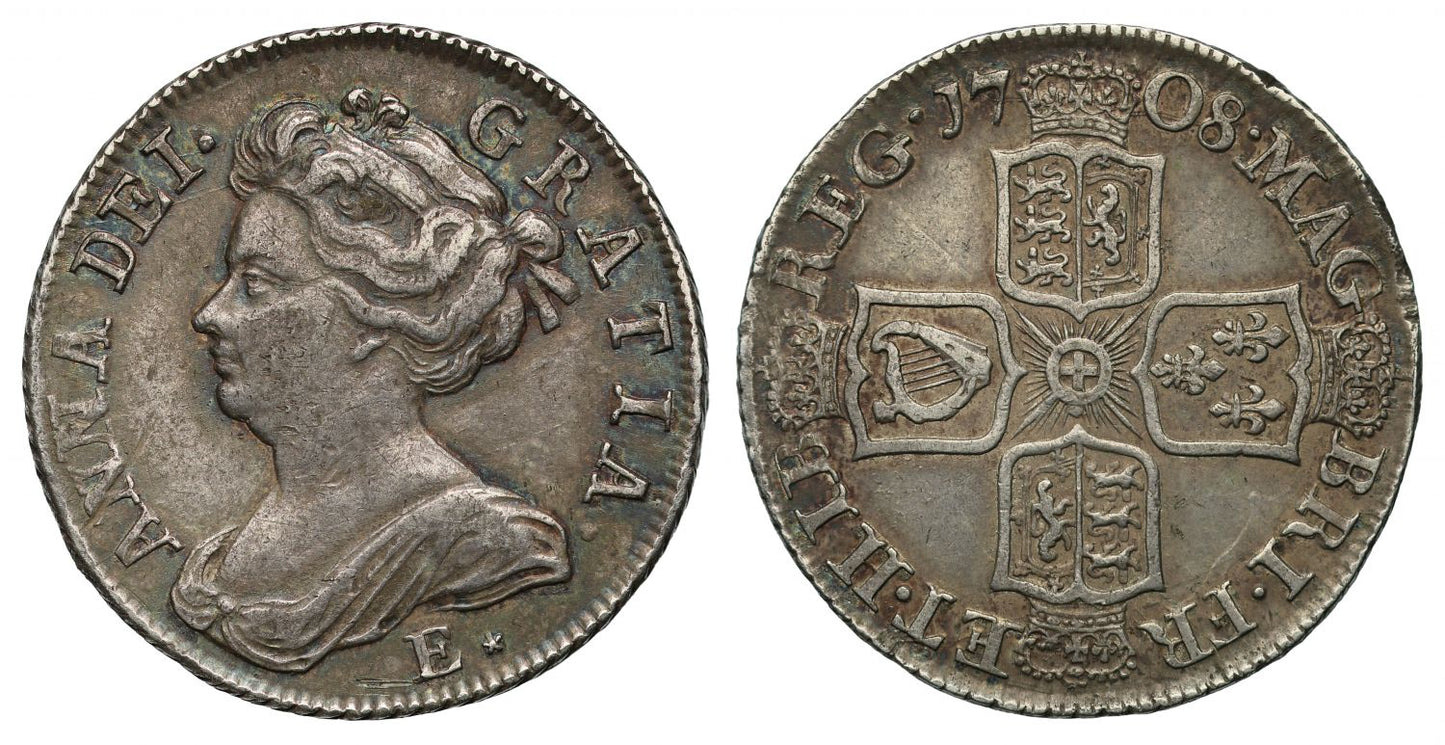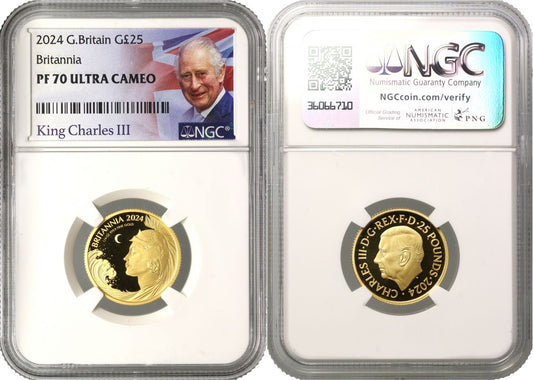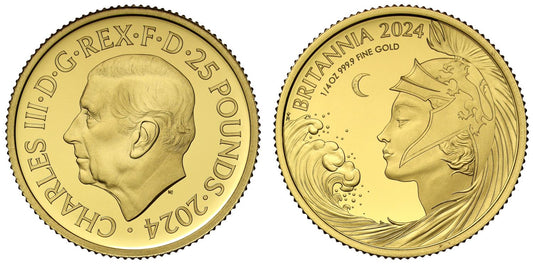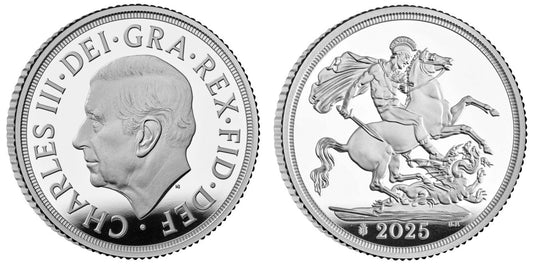FAQs
What makes a coin valuable?
I have coins to sell, what’s the next step?
How will my purchases be shipped?
What happens if I’m not entirely happy with my purchase?
Anne 1708 E* Shilling
Anne (1702-14), silver Shilling, 1708 E*, Edinburgh Mint, fifth local variety Edinburgh draped bust left, E and * below, Latin legend and toothed border surrounding, ANNA DEI. GRATIA. last stop weak, rev. crowned cruciform Post-Union shields, garter star at centre, date either side of top crown, J type 1 and letter O type zero, Latin legend and toothed border surrounding, .MAG BRI. FR ET. HIB REG. edge diagonally grained, weight 5.98g (Bull 1439; ESC 1151; S.3615). Attractively toned, some light surface marks, short scratch in Queen's name, otherwise good very fine, reverse stronger, superior to plate coin of bust variety in Bull, very rare indeed.
The Latin legends translate as "Anne by the grace of God" on obverse, and on the reverse "Queen of Great Britian, France and Ireland."
The old claim to the French Kingdom dating back to the time of the Wars of the Roses, when King Henry VI had regnal jurisdiction over a portion of France, and a number of Mints including Paris. Subsequently the last French possession of Calais had been physically lost in the time of Mary Tudor on January 7th 1557/8. The Edinburgh Mint coins of Crowns, Halfcrowns, Shillings and Sixpences were struck for the period 1707-09, the Shillings exist for each date with some varieties of overdate and bust, and with the intriguing variety of the star added after the E below bust. This occurs on the Shilling for 1707, 1708 and 1709 and also for the Sixpence of 1708. Although suitable tools to prepare the die for striking the Edinburgh coins had been sent up from the Tower Mint in London, permission was given to make some further tools locally in Edinburgh to engravers James Clark and Joseph Cave, though from some surviving documentation they still had not been fully paid for the effort as late as 17th January 1710/11. Interestingly it was James Clark who worked on the gold coinage of the ill-fated Darien Company.
FAQs
What makes a coin valuable?
I have coins to sell, what’s the next step?
How will my purchases be shipped?
What happens if I’m not entirely happy with my purchase?













